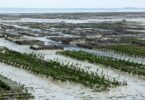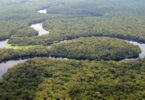Mangrove trees are known for their ability to thrive in coastal areas where land meets the sea. These trees have adapted beautifully to salty environments and the ever-changing tides, making them truly fascinating. But here’s something even more mind-blowing: some mangrove trees actually give live birth! That’s right! While most plants rely on seeds to reproduce, certain mangrove trees, like those in the Rhizophora genus, have evolved a completely unique way of reproducing. It’s a plant reproduction strategy that might surprise you.
The Amazing “Live Birth” of Mangrove Trees
Mangrove trees, particularly the red mangrove (Rhizophora mangle), are capable of giving birth to fully formed seedlings. It sounds almost like something you’d expect from animals, doesn’t it? Rather than releasing seeds into the water or soil like most plants, these mangroves produce seeds that start to germinate while still attached to the parent tree. These tiny “baby” mangroves are called propagules. They grow to a long, pencil-like shape, fully prepared to take root in the mud below.
Once they are fully matured, the propagules detach and fall into the water. From there, they can float for long distances, carried by the current. When they finally find a place to settle, they can take root and grow into new trees. This process of “live birth” gives these baby mangroves a head start in life, ensuring they have a better chance of survival compared to seeds that have to start fresh in the water.
Why Do Mangrove Trees Give Live Birth?
You might wonder why mangrove trees go through all this effort. Well, this unique reproductive method helps them survive in some pretty tough environments. Coastal areas are tricky for plant life because of the salty water and shifting tides. Mangrove trees, however, have developed a way around these challenges. By giving birth to seedlings that are already somewhat developed, they increase the chances of the young trees thriving in this tough environment.
This strategy also helps mangrove trees spread to new areas. As the propagules float away, they can end up in other regions, creating new mangrove forests along shorelines. This helps protect coastlines from erosion, provides habitat for marine life, and maintains the delicate balance of coastal ecosystems.
A Remarkable Strategy for Survival
The way mangrove trees reproduce is a powerful example of nature’s ingenuity. It’s a brilliant adaptation that ensures the survival of the species while also benefiting the larger ecosystem. Mangroves don’t just survive in harsh conditions—they help other creatures thrive by creating rich, protective environments along the coast.
From their “live birth” to their ability to colonize new areas, mangrove trees show just how creative nature can be when it comes to survival. It’s one of those little-known wonders of the natural world that reminds us of the resilience of life in all its forms.







